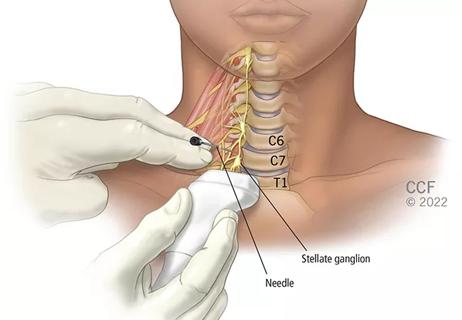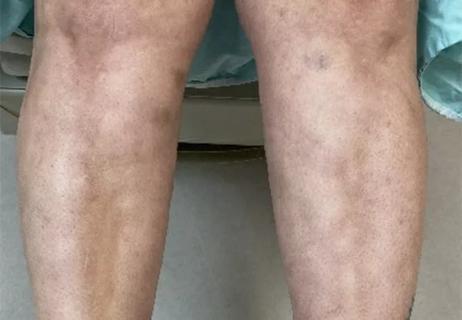iPads bring comfort during COVID-19 no visitor policies

After months of closely monitoring the growing concerns of the rapidly spreading international COVID-19 coronavirus, it became clear in early March that Cleveland Clinic needed to take proactive measures to protect hospitalized patients, visitors and caregivers.
Advertisement
Cleveland Clinic is a non-profit academic medical center. Advertising on our site helps support our mission. We do not endorse non-Cleveland Clinic products or services. Policy
On March 12, the health system implemented restricted visitation for all hospitals, limiting how many visitors each patient could receive and establishing new guidelines for permitted visitors. By March 20, as full social distancing and stay-at-home orders were in place across Ohio and beyond, Cleveland Clinic and many other health systems made the difficult decision to restrict all visitation for admitted patients, with few exceptions.
In response to this order, a small task force of Cleveland Clinic caregivers from the Zielony Nursing Institute, Office of Patient Experience and information technology (IT) department formed an ‘Enterprise Virtual Visit’ team. The team was tasked with working quickly to initiate online family visitation connections for admitted patients.
“With remarkable speed and agility this mighty team worked out the technical and operational logistics to connect patients with loved ones,” says Enterprise Virtual Visit team leader Dr. Nelita Iuppa, Associate Chief Nursing Officer for Nursing Informatics. “Swift decision making, collaboration and deployment of virtual visit technology was the goal. The result; however, was far more impactful than we could have envisioned. Video visits between patients and loved ones have permanently enhanced our outreach and capacity for caring. These visits provide comfort, personal connection and assurance during a time of uncertainty and unrest.”
The Enterprise Virtual Visit team first set out to devise a plan for patients to use their own personal smart phones, tablets and mobile applications (apps) to communicate with family members.
Advertisement
The team conducted a detailed analysis of potential challenges and obstacles that could occur, answering questions like:
The team was able to successfully address each potential scenario within five days, resulting in nurses encouraging patients to use personal devices and mobile apps to connect with loved ones when possible.
Another priority for the Enterprise Virtual Visit team was to ensure that patients without personal devices also had the opportunity to connect with their loved ones. Thus, the team devised a plan to provide inpatient nursing units access to iPads that patients could use for virtual family visits.
Less than 2 weeks after Cleveland Clinic’s visitation restrictions were put in place, the team deployed approximately 600 shared iPad devices to 363 nursing units across 20 hospital locations in Northeast Ohio and Florida. Units received up to four devices depending on unit size and number of inpatient beds.
To virtually connect patients with their families, the team established a process for scheduling virtual visits. First, nurses collect family contact information from patients and send it to the Office of Patient Experience.
Advertisement
Members from the office then call each family directly to ensure family members have a device they can use for connecting, as well as an account with the appropriate mobile app. They coordinate an ideal time for the nurse and patient to virtually connect with the family and then schedule a virtual visit. With assistance from the bedside nurse, patients use mobile devices and virtual apps to visit with their families during the scheduled time.
“Providing the ability to remain connected in isolation and quarantine has been hugely impactful for patients and families,” Iuppa says. “Without question, the visits reduce feelings of separation and loneliness, while aiding in the healing process.”
Across Cleveland Clinic, patients are continually expressing their appreciation for the virtual visits and the nurses who are helping make the visits possible.
Registered nurse Shelby Tazzi, who works on the G61 nursing unit at Cleveland Clinic main campus, noted that the husband of one of her patients said the virtual visit was the first time he’d seen his wife in 11 days.
“He was indebted to the caregivers of Cleveland Clinic and told me that we don’t just save lives, we save families and create opportunities to make sweet memories. He said he and his wife will never forget what we’ve done for their entire family,” Tazzi commented.
In a similar story, Michelle Kincaid, a float nurse working at Cleveland Clinic Akron General in a former neuroscience unit that is now co-horting COVID-19 positive patients, had a patient with COVID-19 who hadn’t seen her daughters in eight days.
Advertisement
Through a virtual visit, her two daughters were given the opportunity to talk and visit with their mom, whose condition was worsening by the day. Not long after the visit, the patient took a turn for the better. The daughters felt the visit helped their mom heal.
“The Virtual Visitation program offers such an amazing connection between patients and loved ones in a variety of ways – whether it’s simply to check in and chat, give family members the chance to see each other for the first time in weeks, or provide closure before a loved one passes,” says Gretchen Hebert, Program Coordinator in Cleveland Clinic’s Office of Patient Experience. “Loved ones, patients and nurses have all been touched by this process and such good has come from the program.”
Serena Wiseman, Patient Experience Manager for the Office of Patient Experience agrees. “Virtual visits provide hope for families and healing for patients,” she says. “On a few occasions, families have expressed that virtual visits have actually given the patient a will to live. At times, the visits also give families a chance to say goodbye to their loved ones, allowing them closure.”
According to Iuppa, using virtual meetings and mobile technologies has also dramatically improved the hospital admission experience. Additionally, the benefits of virtual visits have positively impacted nurses as well.
“Nursing caregivers have benefited from these encounters as they feel good about the small role they are playing in keeping families whole,” Iuppa says. “This is a great example of how nurses not only care for the physical well-being of their patients, but the emotional well-being too.”
Advertisement
In many ways, COVID-19 is permanently changing how healthcare organizations conduct certain business practices.
“Using innovation and compassion as our tools, COVID-19 has taught us to address healthcare opportunities and the services we provide,” Iuppa says.
With regard to virtual visits, Iuppa believes using technology to connect admitted patients with their loved ones will continue well into the future – for any circumstances where visitors cannot physically come to the hospital.
Advertisement

Patients report improved sense of smell and taste

Clinicians who are accustomed to uncertainty can do well by patients

Unique skin changes can occur after infection or vaccine

Cleveland Clinic analysis suggests that obtaining care for the virus might reveal a previously undiagnosed condition

As the pandemic evolves, rheumatologists must continue to be mindful of most vulnerable patients

Early results suggest positive outcomes from COVID-19 PrEP treatment

Could the virus have caused the condition or triggered previously undiagnosed disease?

Five categories of cutaneous abnormalities are associated with COVID-19